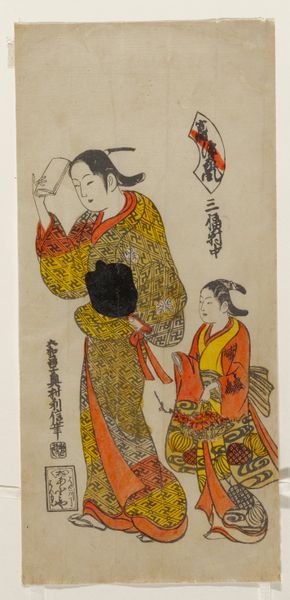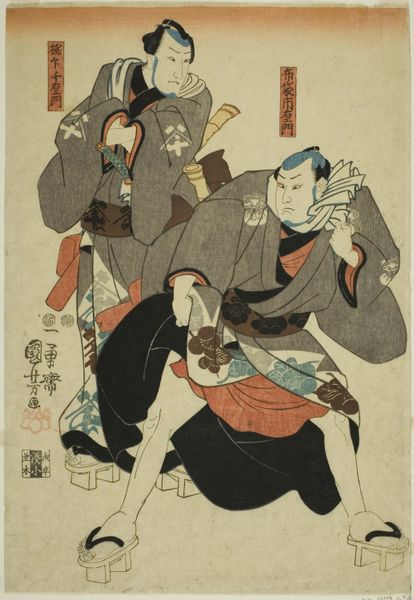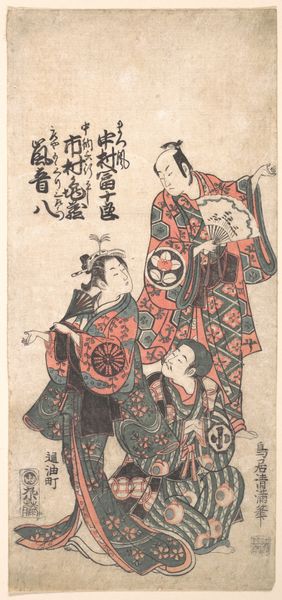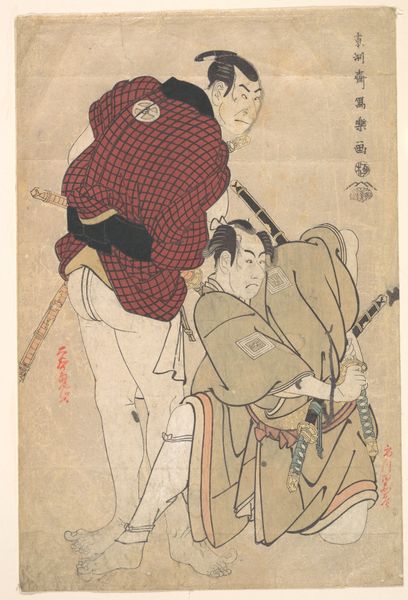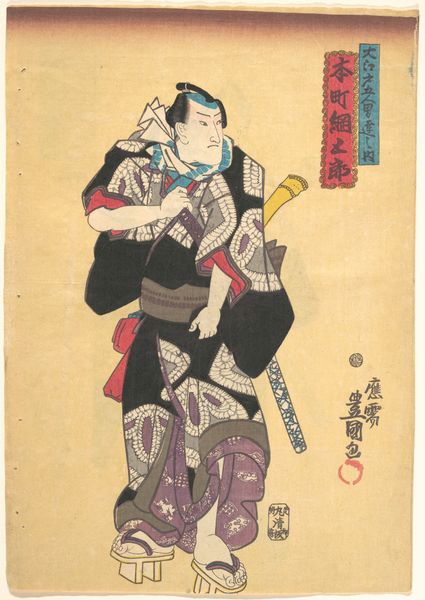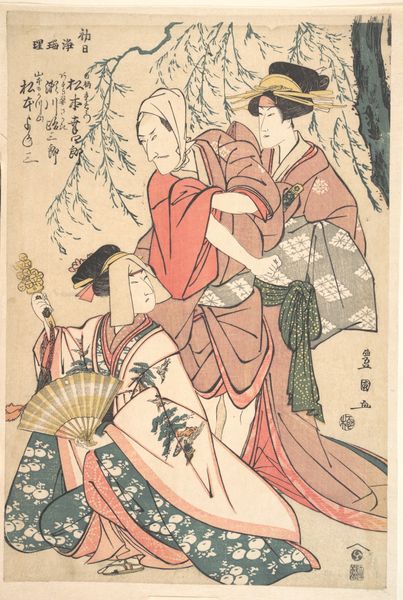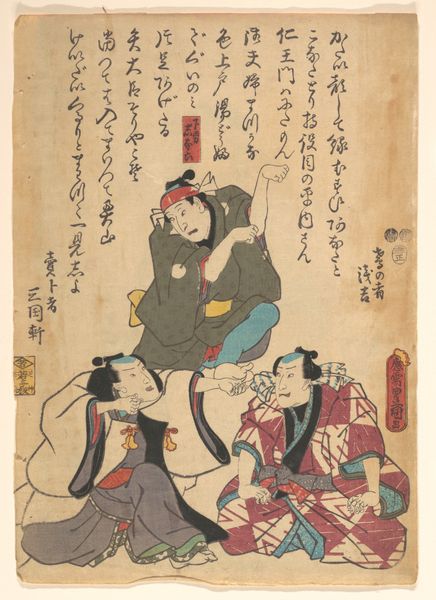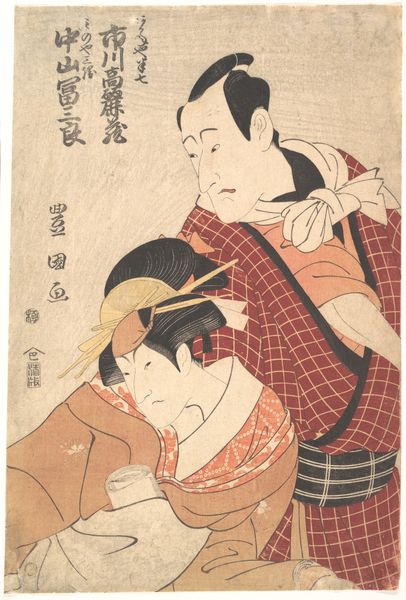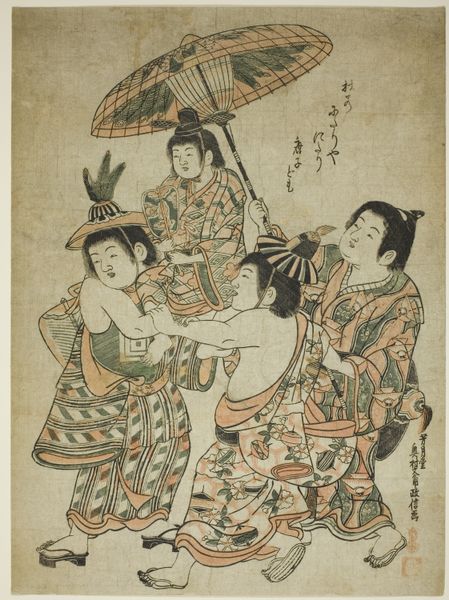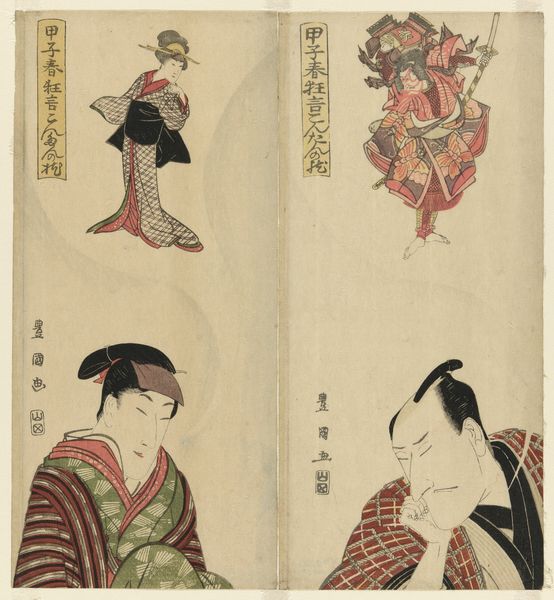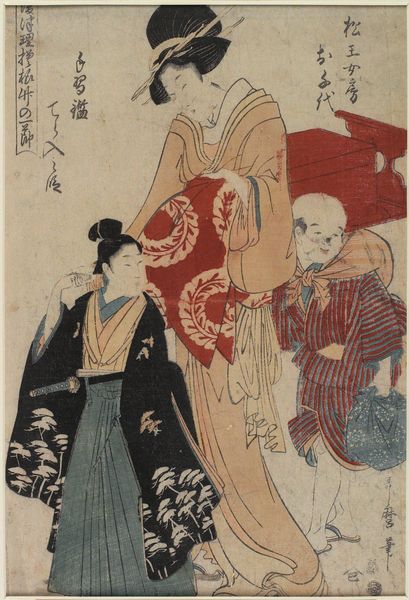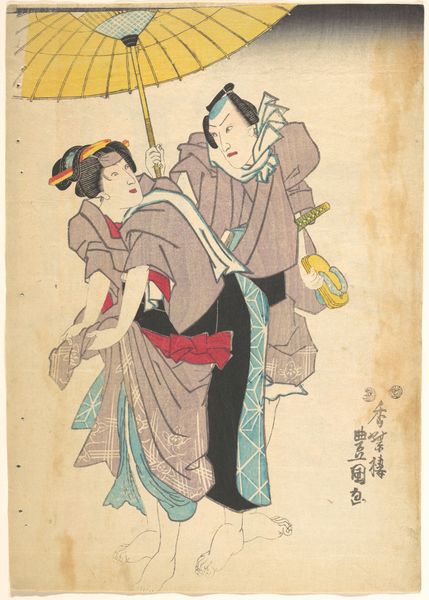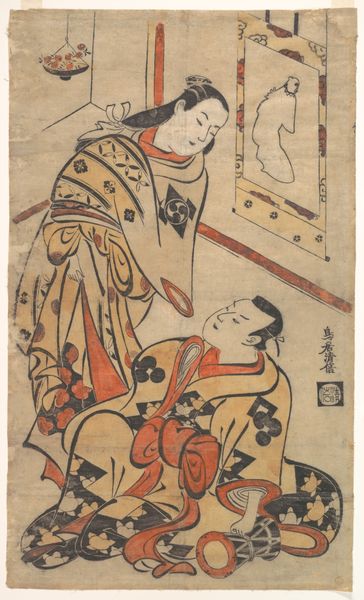
#
childish illustration
#
cartoon like
#
cartoon based
# print
#
asian-art
#
japan
#
cartoon sketch
#
flat colour
#
wedding around the world
#
men
#
watercolour illustration
#
cartoon style
#
cartoon carciture
#
cartoon theme
#
sword
Dimensions: Image: 13 3/4 × 9 5/8 in. (34.9 × 24.4 cm)
Copyright: Public Domain
Editor: This print, simply titled "Print", by Utagawa Kuniyoshi, was created sometime between 1800 and 1861. It's currently at the Metropolitan Museum of Art. There's something quite graphic and cartoon-like about it; I wonder what the story is? What can you tell me about this piece? Curator: Let's start with the materiality of the piece. This is a woodblock print, a process integral to understanding its creation. Consider the labor involved – the carving of the blocks, the application of pigments, the printing process itself. This wasn't about individual genius; it was about skilled craftspeople, working within a specific social and economic system of production. How does understanding it was a woodblock print inform our understanding? Editor: I guess it highlights that artmaking at the time wasn't always a solitary artist creating something from scratch, but a team of people contributing their skills... sort of a mass-produced art. Curator: Precisely. And consider who these prints were made *for*. Not necessarily the elite, but a broader audience, part of a rising urban culture in Japan. Look at the colours and design – intended for popular consumption. It’s not just ‘art’ in the fine art sense, it’s a commodity. And the swords… those imply status, but what's really going on with them, would you say? Editor: They seem miniaturized? As though they're not real swords? Curator: Maybe pointing to their commercial distribution within the popular classes? Think about what materials were used, and how those materials connect to global trade routes and patterns of consumption. It's a small print, yet connected to a much larger world. Editor: So it’s less about the figures depicted, and more about how the print itself was made and consumed. Curator: Exactly! It forces us to move beyond just aesthetics, considering labour, economy, and social context. It is all deeply intertwined. Editor: That's really shifted my perspective. I was initially just seeing a picture, now I'm thinking about the whole production process. Thanks!
Comments
No comments
Be the first to comment and join the conversation on the ultimate creative platform.
